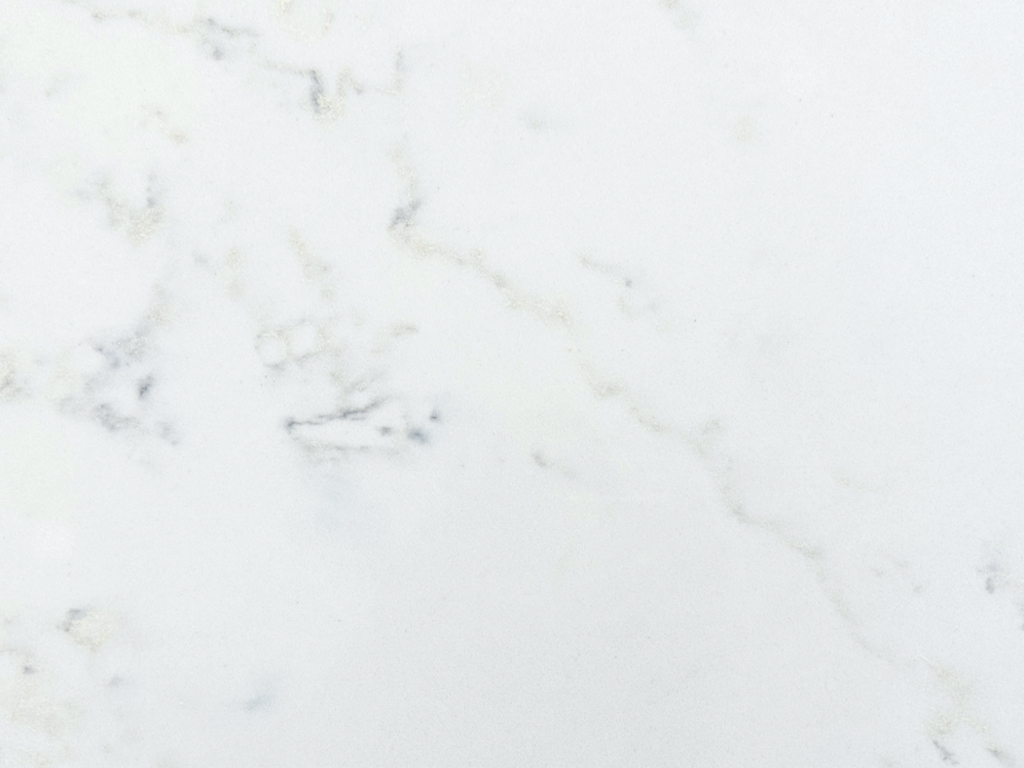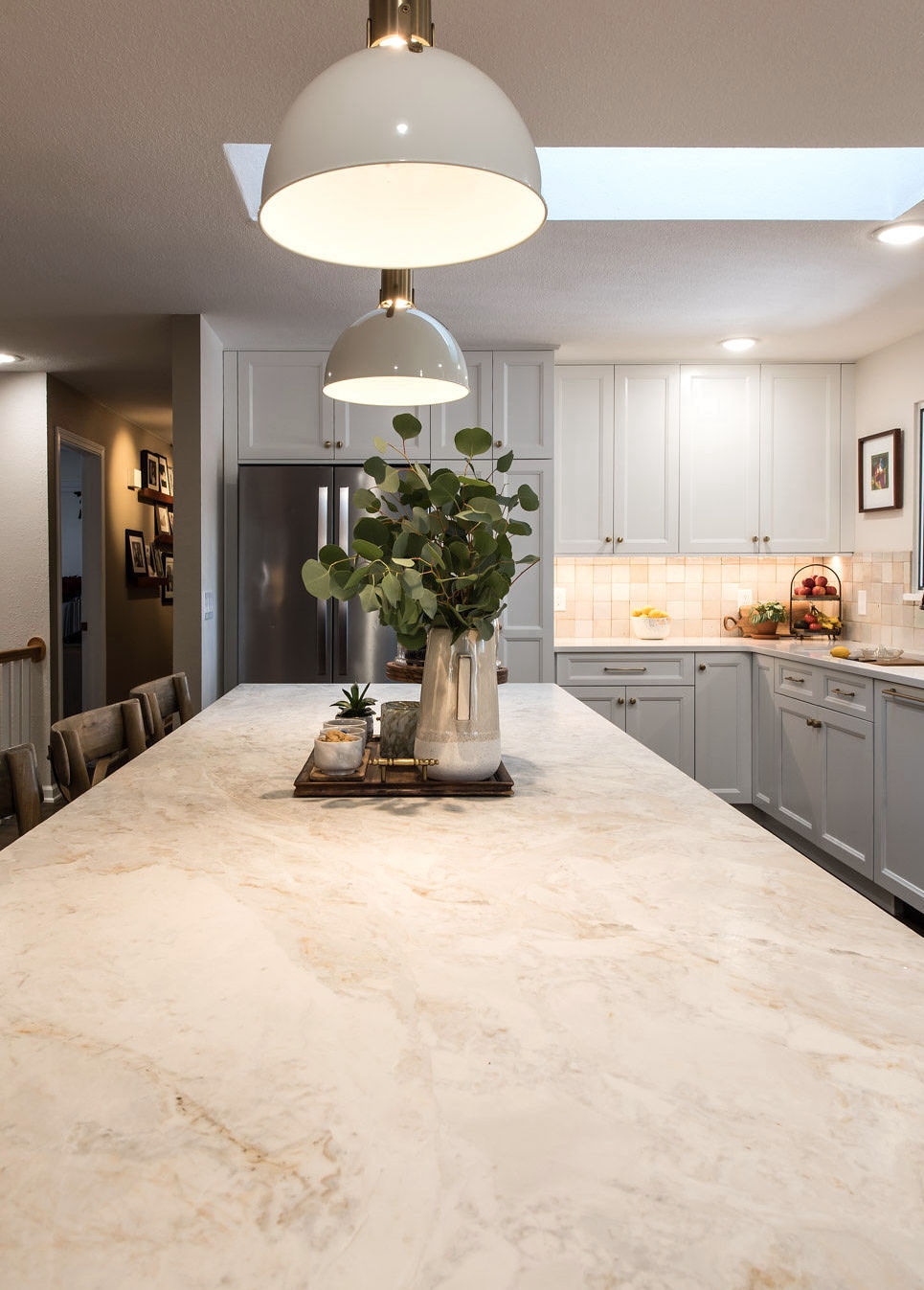
We source from quarries around the world,
with a focus on high quality and unique beauty.
Among the thousands of slabs we carry, you’ll see granite, of course, plus a hand-picked selection of quartzite, marble and soapstone.
Each type of stone has a different feel. The pictures below give a sense of how white colors look across the categories.




Stone types can be a catchall, meaning they all have exceptions to the rule.
Since one of the most common questions we get is ‘What stone is best in a kitchen?’ the list below is ranked by stones that (tend to) have the least maintenance versus ones that take more care and planning.
These descriptions are broad. Depending on which slab names end up on your favorites list, our team will give you more guidance. It’s always a smart idea to ask your fabricator for advice, too.
A natural stone quarried from the earth. Highly stain, scratch and heat resistant. One of the most durable options, it requires minimal maintenance with proper sealing.
Great for both indoor and outdoor applications and for households who want minimal worry.
A manmade product consisting of ground quartz (the mineral) and colored resin. Popular because it’s non-porous, needs minimal maintenance and is available in non-busy shades of white that are harder to find in natural stone.
Quartz can discolor in long-term direct sunlight, so best used for indoor applications.
A natural stone quarried from the earth. Frequently mislabeled, and often misunderstood.
A true quartzite is less porous and less likely to stain, etch, and scratch, making it extremely durable. However, some stones called a quartzite will act like a dolomite.
One of the most requested stones over the past few years, quartzite is absolutely possible to use with the proper education and expectations. Best used indoors.
A natural stone quarried from the earth. Marble can be softer and more absorbent, making it susceptible to staining and acid etching.
Premium sealers on the market today can mitigate these risks. And keep in mind that marble has been used for centuries in high-traffic commercial areas such as hotel bathrooms, floors and bars.
Marble shows imperfections over time, so using it depends on your tolerance level.
Recommended for indoor applications.
A natural stone quarried from the earth. Dense and non-porous, it is naturally stain resistant. It is softer than marble — but still a hard stone — and can scratch more easily than others.
Typically comes in black, gray and green colors. Soapstone has a versatile look. It can be left dry for a subtle matte finish or can be oiled for the enhancement of color and veining.
Recommended for indoor applications.
We mean that as the highest compliment. See more quarry pictures and video here.
1301 S. Platte River Drive
(303) 733-1444
M-F 8am to 5pm
Sat 9am to 4pm
404 N. Link Lane
(970) 419-8576
M-F 8am to 5:30pm
Sat 9am to 2pm
2378 Leland Avenue
(970) 241-1883
M-F 8am to 5pm
Sat 9am to 2pm
Copyright @ Granite Imports 2023
Find Us
Copyright @ Granite Imports 2024
SPECIFIC PROJECTS

We get it. You’re juggling hundreds of decisions and shifting timelines when you build from the ground up.
So we’ll be blunt up front:
save some mental flexibility for
the countertops, especially if they play a large role in your vision.
Counters are a last step, cut and installed after the cabinets are in so they can be precisely measured.
Ideally, you should get a sense of the colors you like — the stone name and prices — at the beginning of the build.
This helps you adjust overall budget and financing, if necessary. It also lets counters drive the design versus being a stressful, I’m-so-over-this, last minute decision.
When you visit us for ideas, ask our team about the colors you like.
Which are routinely stocked? And which are one-of-a-kind looks that you may want to lock in now? — meaning you would arrange for full payment and storage with your fabricator.

Your builder most likely has a fabricator they prefer. And they’ll likely want to be a conduit for that fabricator, passing information back and forth.
This isn’t a bad thing. It eases your load to not have to have planning conversations with every subcontractor.
With that said, we firmly believe:
a) You should get to know your fabricator.
b) You should directly talk to them about what to expect from your stone.
c) You should have a layout appointment with them to discuss seams, sink cutouts and how to maximize what you most love about your slab.
This is your insurance for getting the results you’re dreaming about.
We will check your location suggestion and release it as soon as possible.